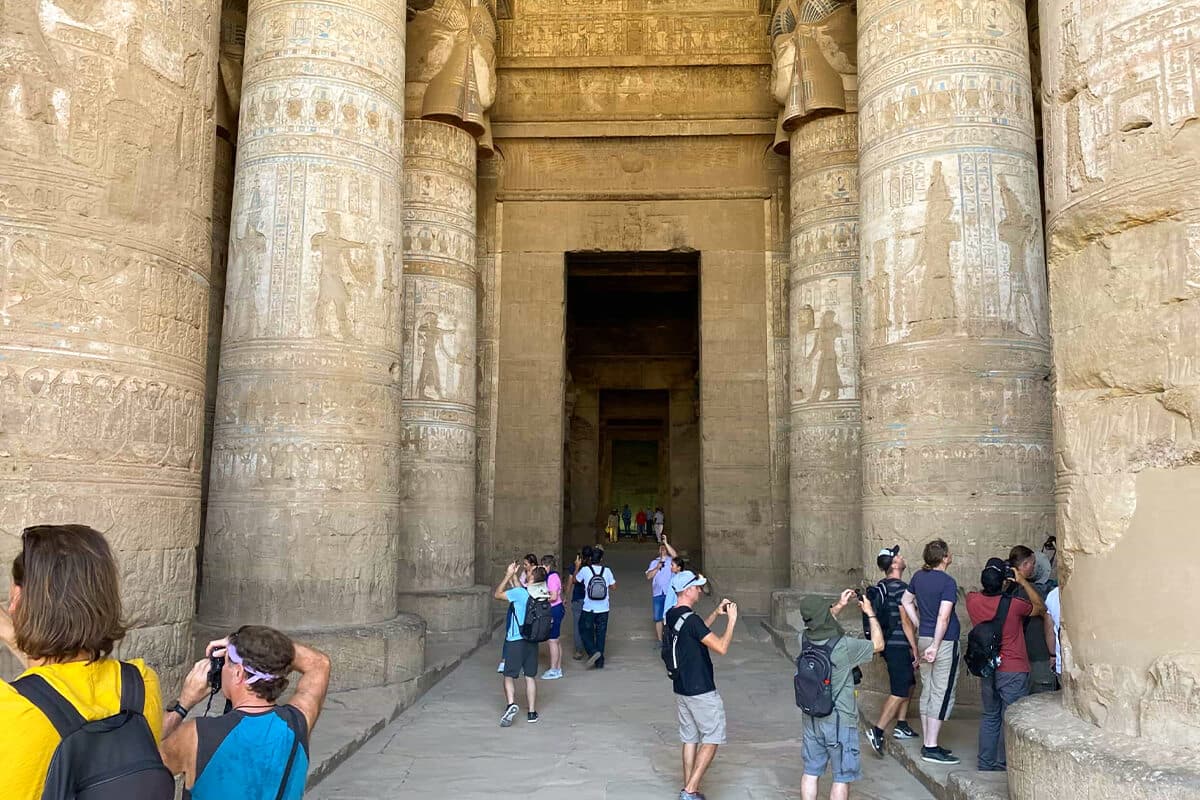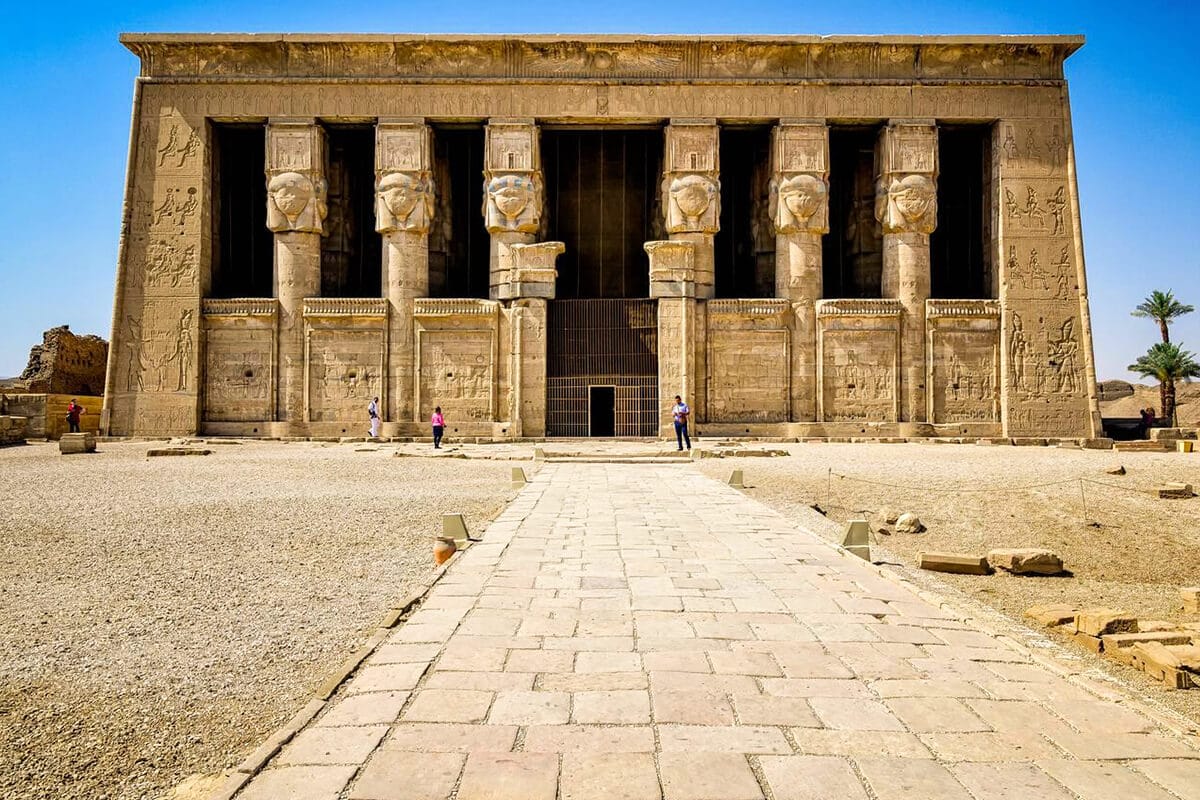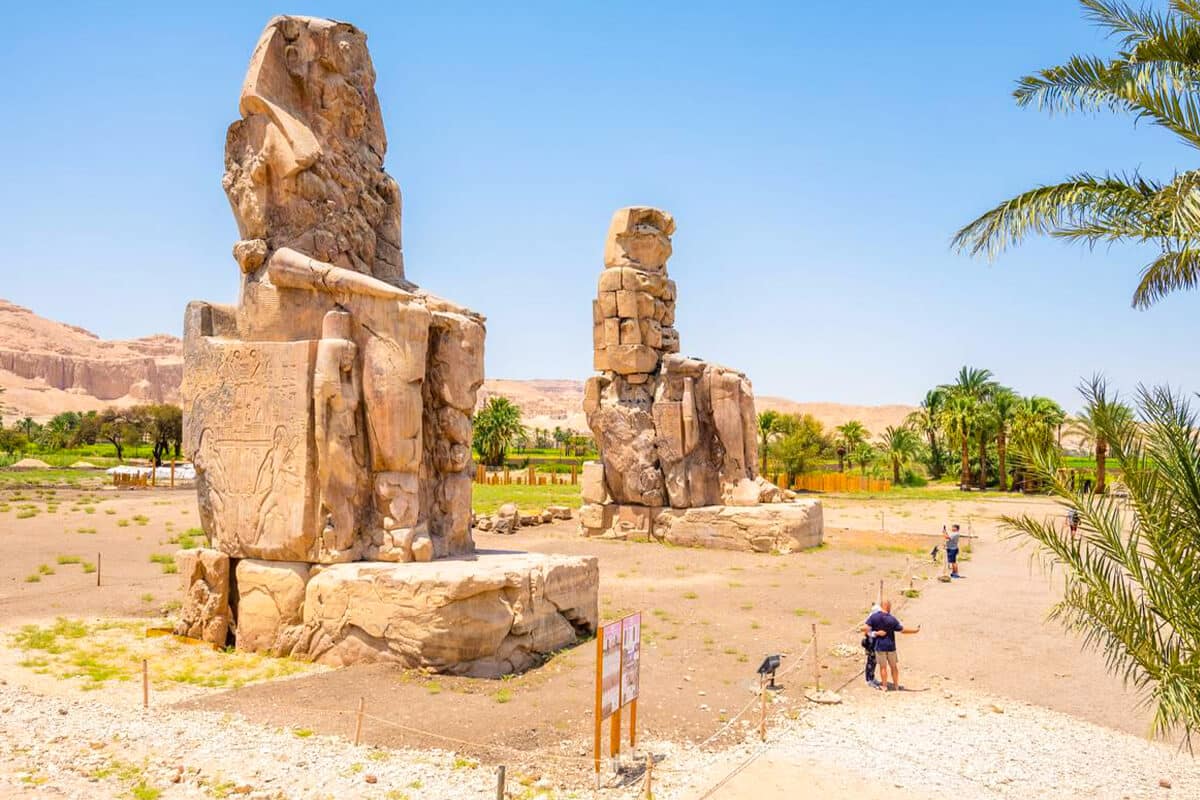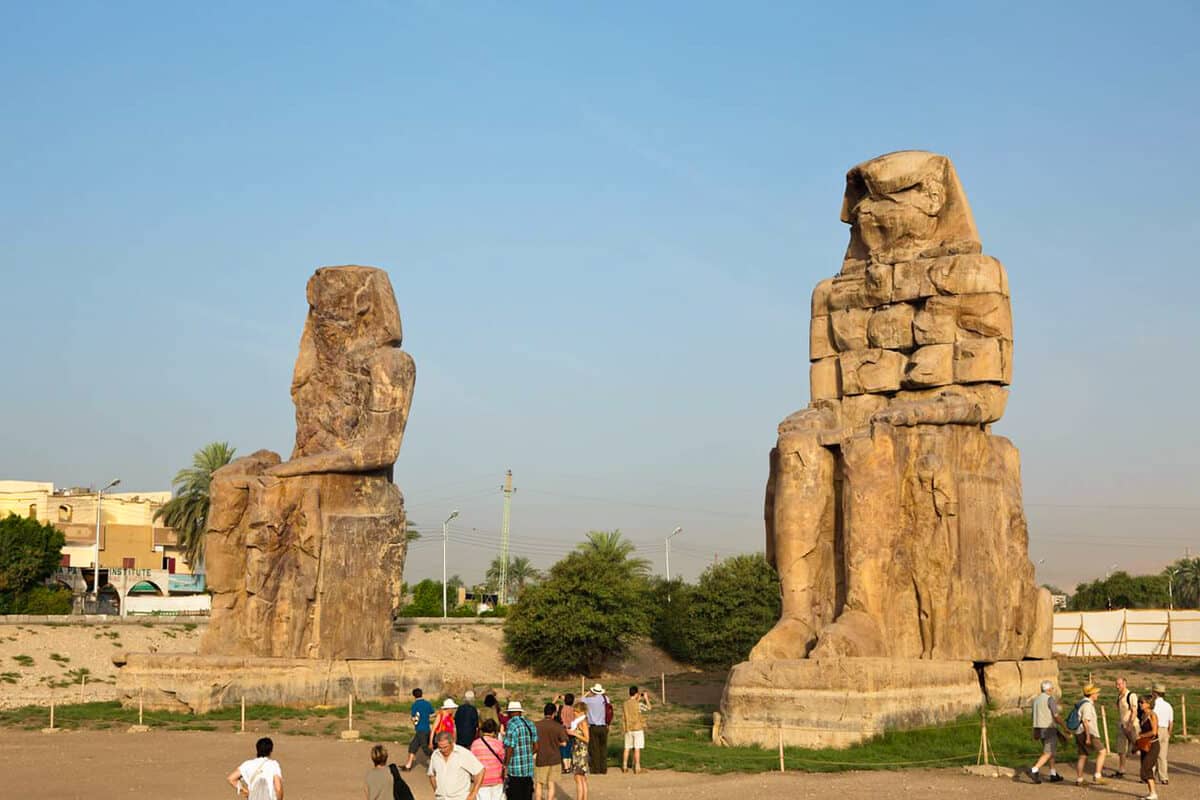Dendera Temple is a must-visit destination, and it is an important historic site that offers visitors a glimpse into ancient Egypt’s rich cultural and religious heritage. In this blog post, readers can expect to learn about the history of Dendera Temple, its unique architecture and design, and the complex’s highlights, including the Hypostyle Hall and the Zodiac Ceiling.
Whether you’re a history buff, an architecture enthusiast, or simply looking for a fascinating cultural experience, Dendera Temple is a must-see destination in Luxor Egypt. In the following sections, we’ll explore the temple’s history, architecture, and highlights and provide the necessary information to plan your visit.
History of Dendera Temple
Dendera Temple was constructed over several centuries, with the earliest parts of the complex dating back to the Old Kingdom (2686-2181 BCE). However, during the Ptolemaic period (305-30 BCE), the temple complex was expanded and renovated, with additions made by various pharaohs and rulers, including Cleopatra VII and Augustus Caesar.
The temple was dedicated to the goddess Hathor, who was worshipped as the goddess of love, music, and joy. Hathor was also associated with the sky, the sun, and fertility, making her an essential deity in ancient Egyptian religion.
Dendera Temple was an important pilgrimage site for ancient Egyptians, who believed that worshipping at the temple could gain favor with the gods and ensure their prosperity and well-being. The temple was also a center for healing, and many people came to seek the help of the goddess Hathor in curing various ailments.
In Egyptian mythology, Dendera Temple was believed to be where Hathor was born, making it a particularly sacred site. According to myth, Hathor emerged from the forehead of Ra, who was worshipped as the sun god. She was often depicted as a cow, a symbol of fertility and nurturing, and was associated with the Milky Way, which manifested her divine power.
Over the centuries, Dendera Temple continued to play an important role in Egyptian religion and culture, with many pharaohs and rulers making additions and renovations to the complex. However, with the decline of ancient Egyptian civilization, the temple fell into disuse and was eventually abandoned.
Architecture and Design of Dendera Temple

A. Overview of the temple’s design and layout
The Dendera Temple complex is a sprawling site that covers an area of approximately 40,000 square meters. The complex has several structures, including the main temple, a birth house, a mammisi, and several smaller chapels and shrines. The temple is constructed of sandstone and built on a raised platform that overlooks the Nile River.
B. Key architectural features and their significance
One of the most impressive architectural features of Dendera Temple is the Hypostyle Hall, which consists of 24 columns that rise to a height of 10 meters. The columns are decorated with intricate carvings and hieroglyphics, and the hall’s ceiling is adorned with astronomical images and symbols.
Another notable feature of the temple is the Zodiac Ceiling, located in a smaller chamber adjacent to the Hypostyle Hall. The ceiling is a stunning depiction of the night sky, with various zodiac signs and constellations represented in intricate detail.
Other vital architectural features of the temple include the massive towers at the entrance, the main sanctuary, which contains a statue of Hathor, and the various chapels and shrines scattered throughout the complex.
C. The symbolism behind the temple’s decorations and carvings
The decorations and carvings that adorn the walls, columns, and ceilings of Dendera Temple are rich in symbolism and provide valuable insights into ancient Egyptian religious beliefs and practices.
For example, the carvings on the columns in the Hypostyle Hall depict various religious scenes, including the ritual of the “opening of the mouth,” which was believed to be necessary to ensure that the deceased could continue to eat and breathe in the afterlife.
The Zodiac Ceiling is also filled with symbolism, with each zodiac sign and constellation representing various aspects of ancient Egyptian mythology and religion. For example, the constellation of Aries was associated with the god Amun-Ra, while Taurus was associated with the goddess Hathor.
Highlights of Dendera Temple

A. The Hypostyle Hall
The Hypostyle Hall is undoubtedly one of the most impressive features of Dendera Temple. Visitors to the site will be amazed by the sheer scale of the hall, which contains 24 massive columns that rise to 10 meters. The columns are adorned with intricate carvings and hieroglyphics, depicting various scenes from ancient Egyptian mythology and religion.
The Hypostyle Hall was used for various religious ceremonies and rituals, and visitors can still feel the awe and reverence that must have been present in this space thousands of years ago.
B. The Temple of Hathor
The Temple of Hathor is the main sanctuary within the complex and is home to a stunning statue of the goddess Hathor. The temple was used for various religious ceremonies and rituals, including the annual festival of Hathor, a significant event in ancient Egyptian culture.
The temple is decorated with intricate carvings and hieroglyphics, and visitors can spend hours exploring the various chambers and shrines that make up this fascinating space.
C. The Sacred Lake
The Sacred Lake is a large body of water located within the temple complex. The lake was an essential feature of ancient Egyptian religious and cultural practices and was used for various rituals and ceremonies.
Visitors can stroll around the edge of the lake and take in the beautiful views of the temple complex or sit and relax in the peaceful surroundings.
D. The Zodiac Ceiling
The Zodiac Ceiling is located in a smaller chamber adjacent to the Hypostyle Hall and is one of the most prominent features of Dendera Temple. The ceiling is a stunning depiction of the night sky, with various zodiac signs and constellations represented in intricate detail.
Ancient Egyptian astronomers used the Zodiac Ceiling to track the movements of the stars and planets. Visitors can gain a unique insight into the astronomical knowledge and practices of this fascinating period of history.
In conclusion, Dendera Temple is a must-visit destination for any traveler interested in ancient Egypt’s rich history and culture. This impressive temple complex has stunning architecture, intricate carvings, and fascinating insights into this remarkable period’s religious practices and beliefs.
Visitors to Dendera Temple will be awed by the scale and beauty of the Hypostyle Hall, enchanted by the intricate carvings and hieroglyphics that adorn the walls of the Temple of Hathor, and fascinated by the stunning Zodiac Ceiling and the knowledge it represents.
We encourage readers to include a visit to Dendera Temple in their travel plans when visiting Egypt. The temple complex is easily accessible and provides a unique and unforgettable experience that will surely be a highlight of any trip.
Finally, we recommend exploring the temple in-depth, as there is much to discover and learn. Whether you’re a history buff, an art enthusiast, or a curious traveler, Dendera Temple is a site to be noticed.
If you want to cruise through Nile River check out Egypt Nile River cruises
Don’t miss to check out our All-inclusive egypt vacation packages you can spend one day in egypt, check out in Egypt day tours




